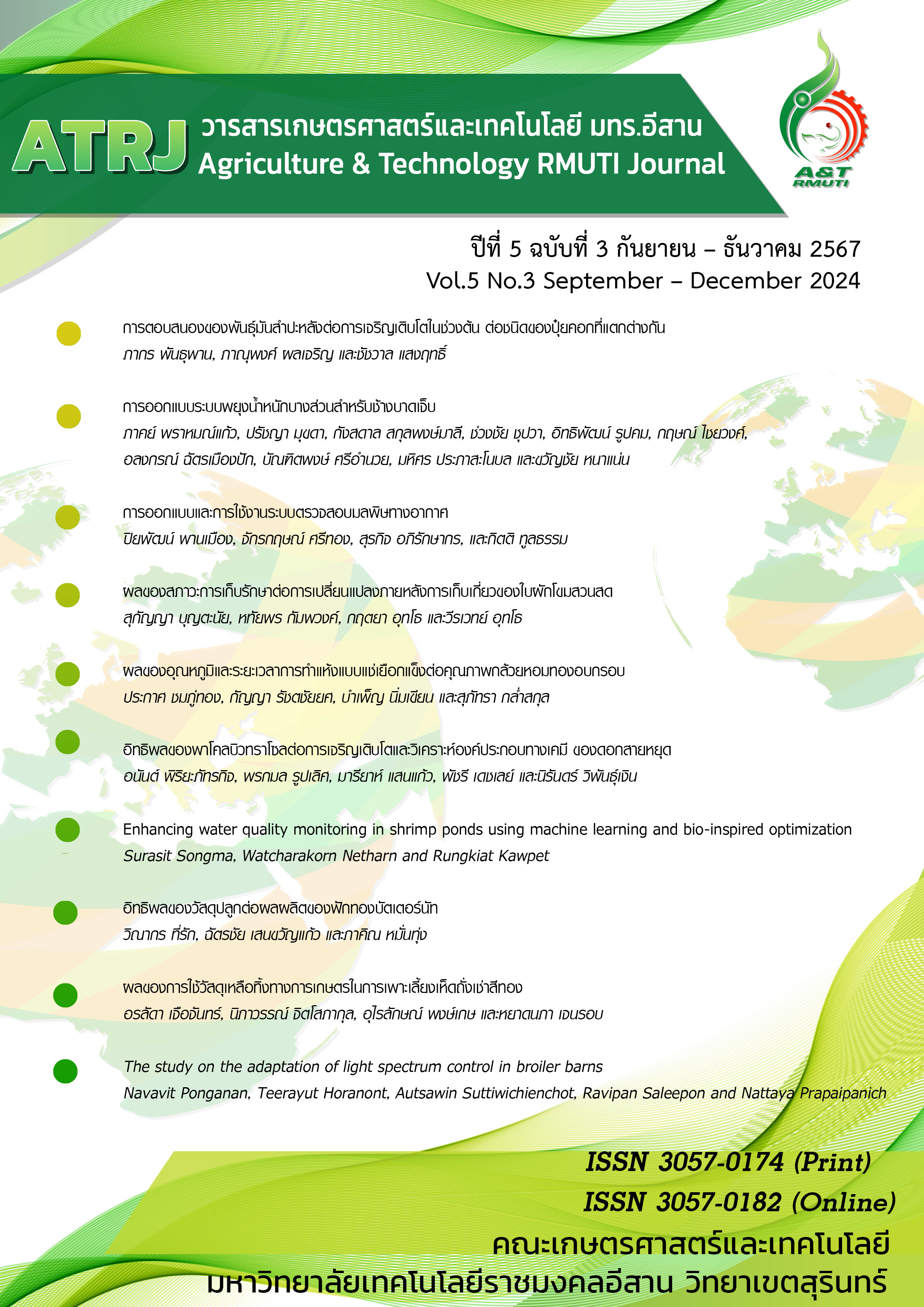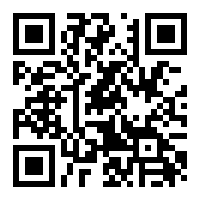Design and implementation of IoT based air pollution monitoring system
Keywords:
Air pollution, Internet of Things (IoT), Monitoring systemAbstract
Air pollution is an important factor that affects many aspects, including the health of humans and other living things. Recognition and identification of air quality are important to plan and manage this issue appropriately. This article presents the design of an air pollution measurement system using Internet of Things (IoT) technology to measure temperature and humidity with a DHT11 sensor and measure the amount of cooking gas, hydrogen gas, and butane gas with the sensor. MQ2 This system uses a Node MCU microcontroller to control the fan to ventilate when the temperature exceeds 36 degrees Celsius and display an alarm signal when the gas concentration value exceeds 200 parts per million. The results showed an average temperature of 33.48 degrees Celsius, an average humidity of 47 percent, an average gas of 262 parts per million. The results of the experiment found that the average temperature was 33.48 degrees Celsius, the average humidity was 47 percent and the gas level was 262 parts per million. The data was displayed on a dashboard via Blink's website. It is also displayed on mobile phones that have the Blink application installed.
References
IQAir Earth (2567). ดัชนีคุณภาพอากาศ (AQI) ของประเทศไทย. ค้นเมื่อ 21 กุมภาพันธ์ 2567. https://www.iqair.com/th/air-quality-ap?lat=15.1181579418&lng=101.002881304&zoomLevel=6.
ภาสินี ม่วงใจเพชร และพูลทรัพย์ โพนสิงห์. (2565). การวิเคราะห์ข้อมูลเชิงพรรณนาการเฝ้าระวังผลกระทบต่อสุขภาพจากมลพิษทางอากาศ 5 มิติ กรณีฝุ่นละอองขนาดไม่เกิน 2.5 ไมครอน (PM2.5) เขตสุขภาพที่ 8 ปี พ.ศ. 2565. วารสารวิชาการสำนักงานป้องกันควบคุมโรคที่ 8 จังหวัดอุดรธานี. 1(1): 28-43.
Alekhya K., Sravya P.D., Naik N.C. and LakshmiNarayana B.J. (2023). Ambient air quality monitoring system. In 2023 International Conference for Advancement in Technology (ICONAT). Goa. India. 1-5. doi: 10.1109/ICONAT57137.2023.10080220.
Ali S.Y., Mukherjee P., Sunar S., Saha S., Saha P., Dutta S. and Goswami S. (2022). Significant effect of COVID-19 induced lockdown on air quality of the Indian Metropolitan City Kolkata using air quality index and health air quality index. Human and Ecological Risk Assessment: An International Journal. 28(7): 762–782.
Gopi. C, Pramodh V., Charan M.S., Reddy K.S.K. and SaiVamsi D. (2022). Cloud-based air quality monitoring through wireless sensor network using NodeMCU. International Journal for Research in Applied Science and Engineering Technology. 10(12): 911–915.
Hashim H., Hazwan M.N., Saad P.S.M. and Harun Z. (2023). The real-time monitoring of air quality using IOT-based environment system. In 2023 19th IEEE International Colloquium on Signal Processing & Its Applications (CSPA), 3-4 Mar. 2023. Kedah. Malaysia. 54-58.
John A.S., Thomas G., Zacharia S.S., Anu Raj Er. and Er. Agitha M.S. (2022). IoT based real time air and noise pollution alert system for asthma and angina patients. International Research Journal of Engineering and Technology (IRJET). 9(5): 3427-3431.
Kharade M., Katangle S., Kale G.M., Deosarkar S.B. and Nalbalwar S.L. (2020). A NodeMCU based fire safety and air quality monitoring device. In 2020 International Conference for Emerging Technology (INCET). Belgaum. India. 1-4. doi: 10.1109/INCET49848.2020.9153983.
Liu Z., Wang G., Zhao L. and Yang G. (2021). Multi-points indoor air quality monitoring based on Internet of
Things. IEEE Access. 9: 70479–70492.
Mohd S.M.H., Sulaiman M.D.H., Jefree N.H. and Adan N.F. (2022). Multidisciplinary applied research and innovation. Multidisciplinary Applied Research and Innovation (MARI). 3(1): 381-389.
Murad S.A.Z., Bakar F.A., Azizan A. and Shukri M.A.M. (2021). Design of Internet of Things based air pollution monitoring system using ThingSpeak and Blynk application. Journal of Physics: Conference Series. 1962(1): 012062. https://doi.org/10.1088/1742-6596/1962/1/012062.
Purbakawaca R., Yuwono A.S., Subrata I.D.M., Supandi H. and Alatas H. (2022). Ambient air monitoring system with adaptive performance stability. IEEE Access. 10: 120086–120105.
Roy S. and Singha N. (2020). Analysis of ambient air quality based on exceedance factor and air quality index for Siliguri City, West Bengal. Current World Environment. 15(2): 236–246.
Singh A., Joshi H., Srivastava A., Kumar R. and Hasteer N. (2020). An analysis of polluted air consumption and hazards on human health: A study towards system design. In 2020. 10th International Conference on Cloud Computing, Data Science &. Engineering (Confluence). Noida. India. 532-539. doi: 10.1109/Confluence47617.2020.9057848.
Srivastava A.K. (2022) Air pollution: facts, causes, and impacts. Asian Atmospheric Pollution. 39–54.
Ukadike I.D., Akazue M., Omede E. and Akpoyibo T.P. (2023). Development of an IoT-based air quality monitoring system. FUPRE Journal of Scientific and Industrial Research. 7(4): 53-62.
Downloads
Published
How to Cite
Issue
Section
License
Copyright (c) 2024 Agriculture & Technology RMUTI Journal

This work is licensed under a Creative Commons Attribution-NonCommercial-NoDerivatives 4.0 International License.
เนื้อหาและข้อมูลในบทความที่ลงตีพิมพ์ในวารสารทดสอบระบบ ThaiJo2 ถือเป็นข้อคิดเห็นและความรับผิดชอบของผู้เขียนบทความโดยตรงซึ่งกองบรรณาธิการวารสาร ไม่จำเป็นต้องเห็นด้วย หรือร่วมรับผิดชอบใดๆ
บทความ ข้อมูล เนื่อหา รูปภาพ ฯลฯ ที่ได้รับการดีพิมพ์ในวารสารทดสอบระบบ ThaiJo2 ถือเป็นลิขสิทธิ์ของวารสารทดสอบระบบ ThaiJo2 หากบุคคลหรือหน่วยงานใดต้องการนำทั้งหมดหรือส่วนหนึ่งส่วนใดไปเผยแพร่หรือเพื่อกระทำการใดๆ จะต้องได้รับอนุญาตเป็นลายลักอักษรณ์จากวารสารทดสอบระบบ ThaiJo2 ก่อนเท่านั้น






